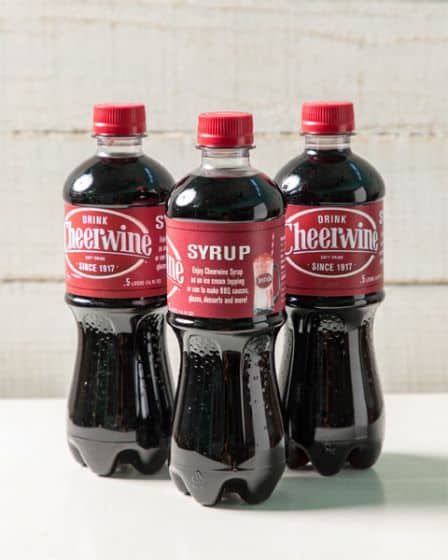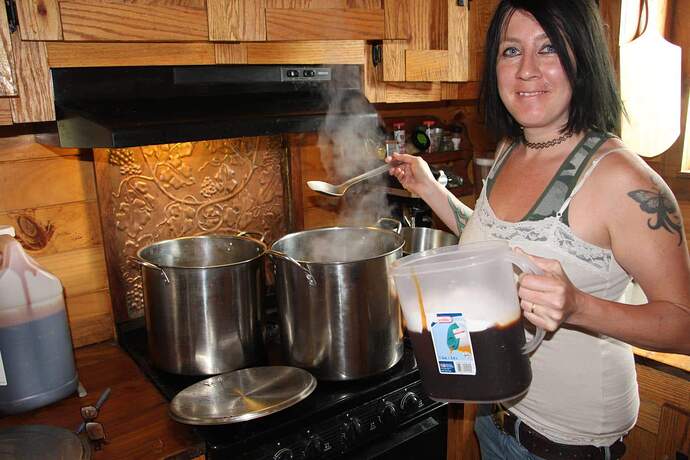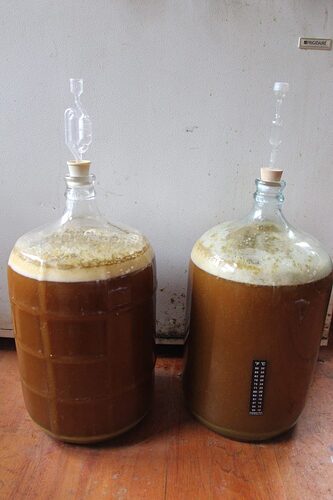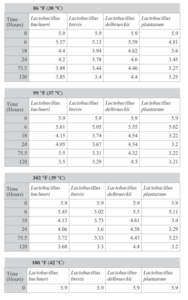From a prepping perspective, it is much more practical to store the ingredients to make your beverages than to stash back an immense supply. People stash back liquor rather than beer for a long emergency because it is more concentrated, and it doesn’t go bad. You are also not storing a bunch of water and packaging.
Let’s say your household beer consumption is 2 per day. That is pretty low, but it still comes to almost 61 12 packs or 730 bottles! Each one of those 12 packs comes in a cardboard box. That is a lot of packaging you are paying for and that you have to dispose of. It also takes up a lot of space, and at some point, your beer is going to be tasting skunky and not so great. It doesn’t keep well.
You can store enough ingredients to make that much beer at home in part of a closet if you reuse bottles or have a kegging system.
Making your own beverages gives you control over the sweetness, alcohol percentage, and quality of ingredients.
Do you like things to be a little sweet but not a lot? Making your own soda will allow you to customize the sugar level in your beverages. I like cola once in a while, but I always water it down with ice. Most soft drinks are too sweet, and I’m not particularly eager to consume artificial sweeteners.
Using less sugar or using juice and natural flavors to make “soda” can help you maintain a better weight too. There are plenty of people out there that drink three sodas or even six sodas a day. A three soda-a-day habit (12 oz can size) adds 450 calories to your daily diet! Cutting that in half means you will likely be at least 5 or 10 lbs lighter over the course of a year.
Kegging Systems
For a small investment, you can start kegging soda, seltzer, or beer at home. This is the least time-consuming way to make and dispense carbonated beverages in a reasonable quantity.A kegging system consists of the following:
- CO2 Tank and Connecting Line
- Keg
- Tap Line
- CO2 Regulator
While you may not have room for your CO2 tank in your fridge, you can just add a little CO2 to your keg occasionally to keep your beverages flowing. This is not as convenient as having everything in one place, but it eliminates the need for a separate fridge.
With a kegging system, you can carbonate your favorite juices or even wine if you want. In fact, you can add some water for your own juice or wine spritzers on tap.
Here is a video that shows you how to use a simple kegging system: https://youtu.be/Yv8aU43ibAY
Keg Size
Five gallons is the standard keg size for most homebrewing or soda-making projects. We have one keg that is just 2 gallons that we use for small batches of seltzer or other sparkling beverages. Smaller kegs can be nice, but they are harder to find used and often cost just as much as a 5-gallon keg. In my own opinion, I think they are worth it for some things. Five gallons is a lot more weight to lift, for example, and there are just some things that you don’t want to make that much of. You can just partially fill a 5-gallon keg, but then you are wasting quite a bit of space.
Soda Stream
These are a decent option for a single person or maybe a couple that enjoys a little soda or likes sparkling water. The C02 costs and capacity limitations make them not so practical for families. I recommend purchasing flavoring extracts that are not namebrand Soda Stream.In the past, we tried brands like Soda Stream and found that their flavoring agents tasted unnatural, and they cost a lot of money compared to domestically produced extracts and flavors like those from Nature’s Flavors.
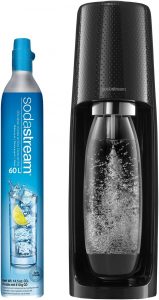
During the pandemic, my husband and I discovered Nature’s Flavors. This company makes a larger variety of extracts for flavoring sodas, seltzer, or other food products. A bottle of their extracts lasts a long time. If you have a favorite flavor, it is best to buy it in a quart or larger size.
Some name brand flavors are basically impossible to replicate at home. You need the name brand syrup.
Some drinks are patented and hard to replicate at home. A good example is Coca-Cola or Pepsi. You can buy cola extract or flavoring, but it does not taste the same as name brands.Recently I discovered that Cheerwine makes a syrup that can be used to make Cheerwine at home. Here is a link for more info.
It is possible to purchase soda syrups like those used at restaurants if you really cannot do without your brand of soda. The downside is that they are already sweetened with high fructose corn syrup or artificial sweeteners so they are not a great option for those that are trying to eliminate those from their diets.
Making Beer At Home
[caption id="attachment_641135" align="alignnone" width="1536"] Making beer at home[/caption]We have made a lot of our own beer for decades at this point. My husband and I met in college and making beer was one of the things we did, so we didn’t have to pay a lot to drink something decent. Back then, we could produce 48 standard 12-ounce beers for around $15-$20.
Now we use a kegging system, and the ingredients cost a bit more, but it is still a lot less than buying beer at the grocery store.
Here is a brief overview of how to make your own beer.
Ingredients
[caption id=“attachment_641136” align=“alignnone” width=“400”]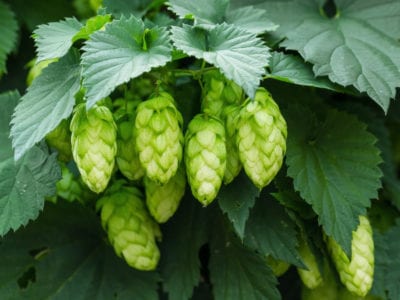 Green hops[/caption]
Green hops[/caption]
- Hops
- Liquid or Dry Malt
- Water
- Yeast
- Large Pot
- Brew Bucket or Carboy
- Siphon Hose
- Kegging System or Bottles and Caps
To Make 10 gallons
- Fill your 5 gallon pot half way with water.
- Add 2 ounces of hops. Some recipes require more.
- Bring to a boil.
- Add liquid malt and/or corn sugar
- Boil for 15 minutes or more depending on your exact recipe. For a pale ale I usually don’t let the wort boil for more than 20 minutes.
- Let wort ( this is what unfermented beer is called) cool until it is around 150F.
- Add 2 more ounces of hops
If your wort is under 90F, add yeast and put your airlock in place. If the temp is too high, give it a little more time to cool off. Make sure you have water in the airlock but don’t overfill it. Most airlocks have a line to indicate the maximum fill level.
Let your beer ferment until the airlock is not bubbling any longer. The higher the final alcohol content, the longer it will take for beer to ferment fully. The temperature where the beer is allowed to ferment also plays a major role. Different beer yeasts have a temperature range they will convert sugar to alcohol at. If you are in the lower range then your beer will take longer to finish. It is best to not be at the extreme end of your range. Try for a temperature that is in the middle. While it may be tempting to brew in a cold garage or basement area, you need to make sure that it is not too cold. Fermentation can completely stop or never even happen if the temperature is too low for your yeast to get started. The result is a ruined batch of beer.
Note: You can buy sticker strips that attach to your fermentation container and tell you the temperature of your wort. This can be help you avoid putting yeast in and scorching it. If your airlock is not bubbling after 12 hours and you don’t see any foaming action on top of your wort then you can always add another packet of beer yeast. I have definitely scorched my yeast more than once and had to do this.
Brewing From Grain or “All Grain Techniques”
All grain brewing produces a higher quality product, but it takes more work and cannot make as much beer in a pot. For example, a 5-gallon pot will only make around 4.5 gallons of all-grain beer, whereas I can make 10 gallons using concentrates.Grains take up a lot more storage space and cost more to ship as well. Here are some links to sites to get started using all grain if this is appealing to you.
Wine
Making Your Own Wine
Wine kits are the easiest way to get started making your own. They have clear instructions and you can get kits to make wines that would be impossible to get the raw ingredients for in your area. You will still need to buy some basic wine making supplies.Wine requires a lot more patience than beer because it takes a lot longer for the yeast to convert the sugars to alcohol.
Here are a few wine kits to consider.
Equipment and Making Wine From Raw Fruit or Juices
To make your own wine you need the following:- Fruit or Juice
- Cane or Corn Sugar
- Wine Yeast
- Fermentation Vessel
- Bottles
- Corks
- Corker
Fruit alone, with the exception of some wine grapes, does not have enough alcohol to make a shelf stable wine. You must add sugar. Corn sugar or “Dextrose” is better but white table sugar works just fine. The goal is to produce a wine that is at least 10% alcohol. The wine you get at a shop typically ranges from 11.5%-15% with 13.5% being the most common. Fruit wines are typically on the lower end of the alcohol range. It is important that whatever recipe you use, that you follow the instructions for adding additional sugars or better yet, use a refractometer to test your fruit or juice and then use the measurement to figure out how much sugar you need to add.
One mistake a lot of people make with fruit wines is simply not adding enough fruit to make it tasty. This is understandable considering how expensive fruit can be. Plenty of 5 gallon fruit wine recipes call for a mere 5-10 lbs of fruit and the rest of the alcohol comes from sugar. It is well worth the money to make wine using more fruit. When we last made blackberry wine, we picked a full five gallon bucket for each 5 gallons of wine. When the berries are crushed the volume goes down so you have to add sugar and water to adjust the volume and get the sugar content high enough to reach the 10% final alcohol minimum.
I recommend a good book on home winemaking for reference or visiting a few of the sites I link to below. Wine requires a bit more patience than beer. There are more steps that you must take to get a quality product, especially if you are starting out with raw ingredients and not using a kit.
Calories in Alcoholic Beverages
I think that people put a lot of blame on alcohol for weight gain. Consider that when you buy a six-pack at the grocery store, the bottle usually says that it has 100-200 calories per 12 oz. I think that is very misleading. They are counting the caloric value of the ingredients that are turned into alcohol during fermentation. While drinking six beers a day may not be the best for you, there is no way that someone that drinks that much beer per day will weigh as much as someone that drinks six sodas and eats the same way. I can say this from personal experience in my younger years too.Mixed drinks are a different story. What people mix liquor with is often very high in sugar and calories.
Sources For Beverage Supplies
MoreBeer
This is the supplier I currently use for purchasing hops, liquid malt extracts, and corn sugar. The shipping cost is included, and they are one of the only places where I can find Ultra Light Liquid Malt for making very pale ales. Their hop prices by the pound are excellent, and you can save even more by purchasing 5 lb bags of the most commonly used hops like Cascade. They have a warehouse on the East Coast and one on the West Coast, so your order usually arrives in a very timely manner. Sometimes they have to ship something to you from the warehouse that is further away from you, and it takes longer, but it is still pretty fast.Label Peelers
I have to say that Label Peelers has some excellent coupons and sales throughout the year. Shipping is not free. Some may say it seems like a lot, but when you add up the overall cost of what you are ordering and the shipping, you are often paying less than from another supplier.Local Suppliers and Malt Houses
If you are in an area with many breweries, you may have a malt house close by that you can purchase bulk grains from. I live near Asheville, which has more small breweries per capita than anywhere in the country. Naturally, we have a malt house that sells 50 lb sacks of malted grains for a good price.A lot of towns have homebrew and wine shops that sell ingredients and kits to get you started. Most of them offer brewing classes too that can be fun if you are a beginner.
Check out local farms, farmer’s markets, and orchards for fruit if you want to make wine or cider.
Used Equipment
I highly recommend checking out Craigslist for used homebrewing or kegging equipment. Sometimes you can even find kegerators for sale too. Plenty of people move around a lot and cannot take their stuff with them. You can pick up some really great deals so you can get started for a lot less money.
Books On Beverage Making
It is possible to "Clone Brew" your favorite beer. In fact, there are many websites and books dedicated to helping homebrewers replicate their favorite commercial beer recipes.Beer
The Complete Joy of Homebrewing
The Brew Your Own Big Book of Clone Recipes
How To Brew: Everything You Need To Know To Brew Great Beer Every Time
Wine
Home Winemaking: The Simple Way To Make Delicious Wine
Soda
Conclusion
Making your own beverages can save a lot of money and reduce how much trash and recycling you have to deal with. When you get to choose your own ingredients and recipes, you can cut out a lot of sugar, high fructose corn syrup, and artificial coloring agents. On top of that you can have fun creating new and interesting flavors that you cannot find in any store!Do you have a favorite beverage recipe to share with the tribe?
This is a companion discussion topic for the original entry at https://peakprosperity.com/how-to-make-your-own-beer-wine-soda-and-seltzer/
